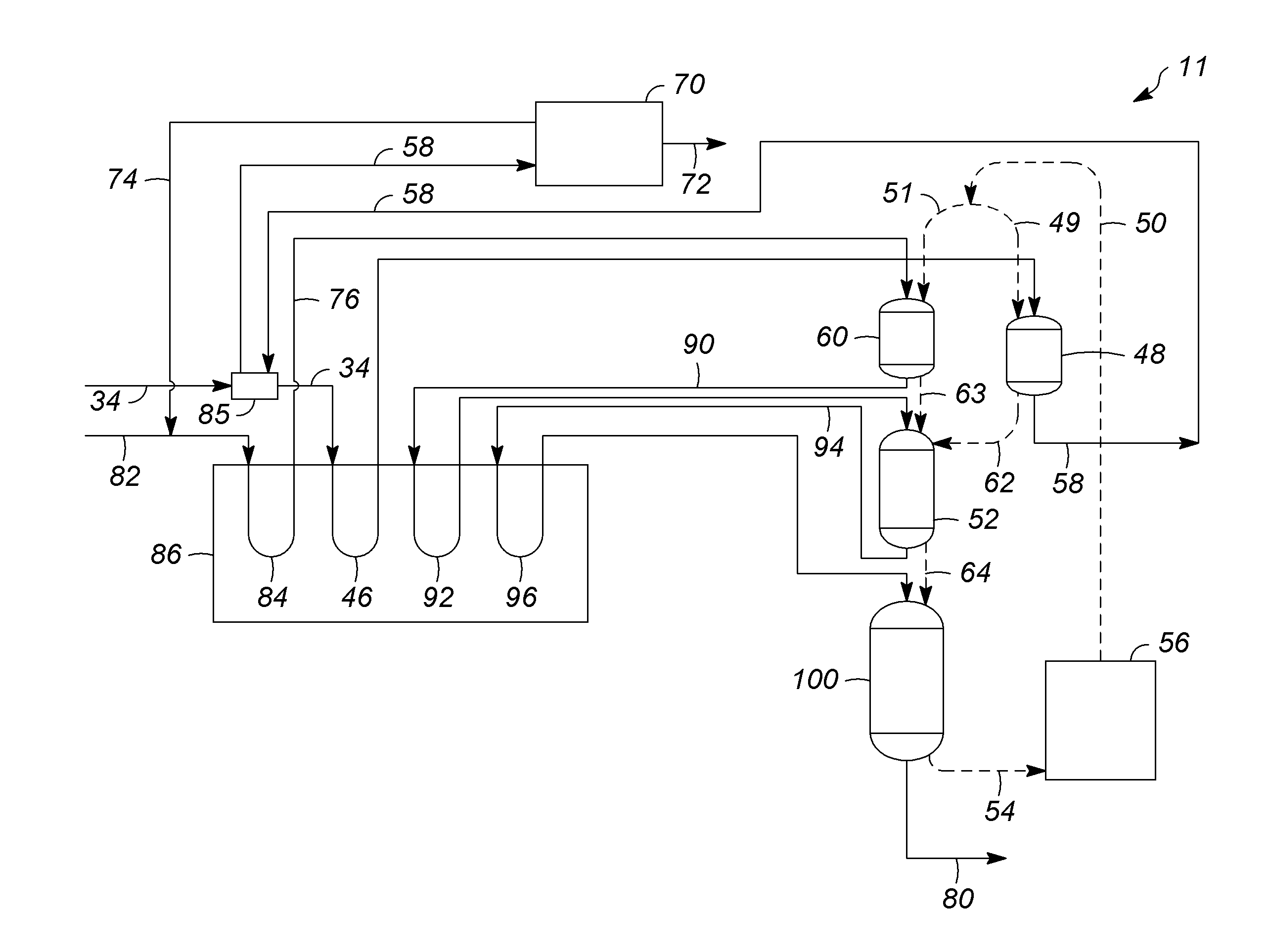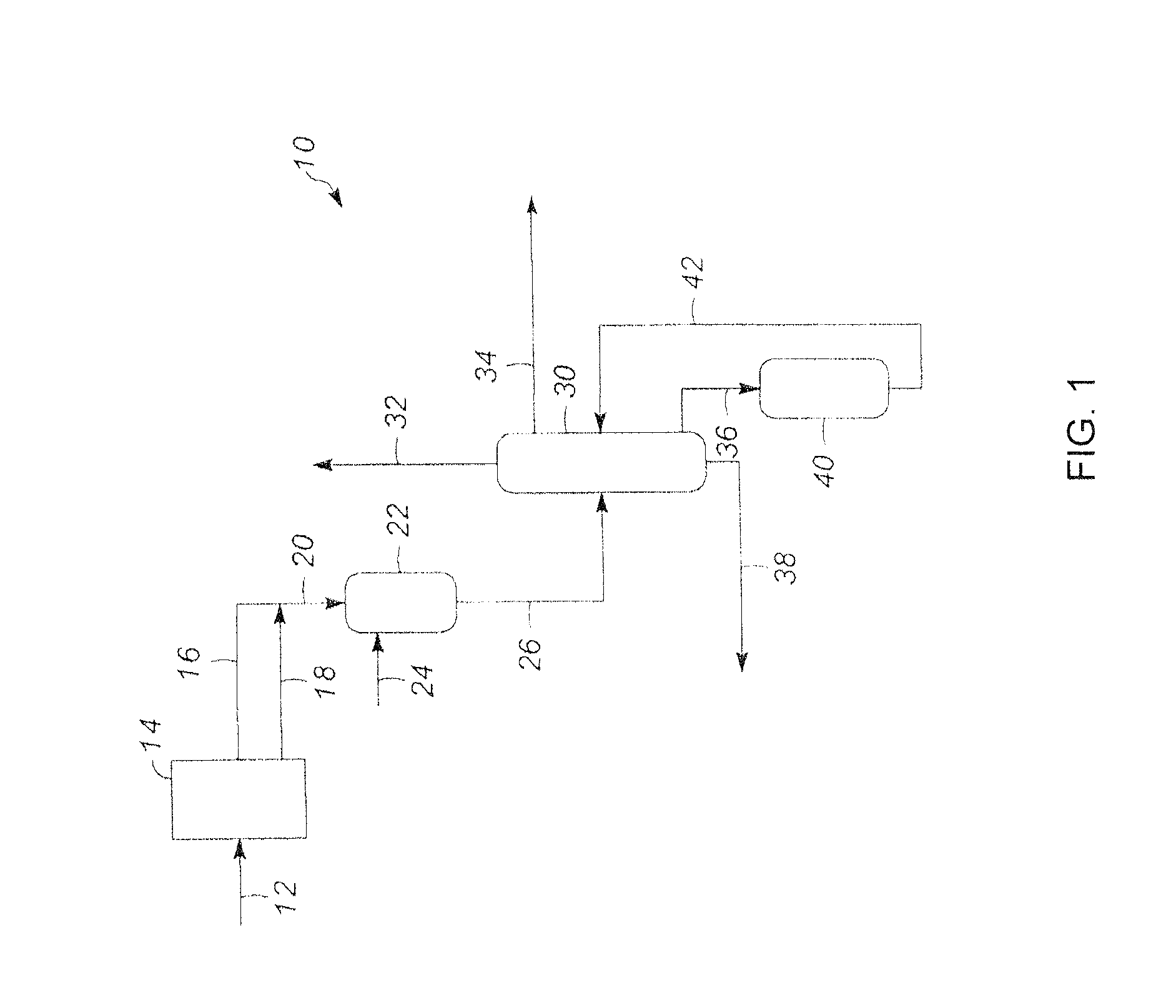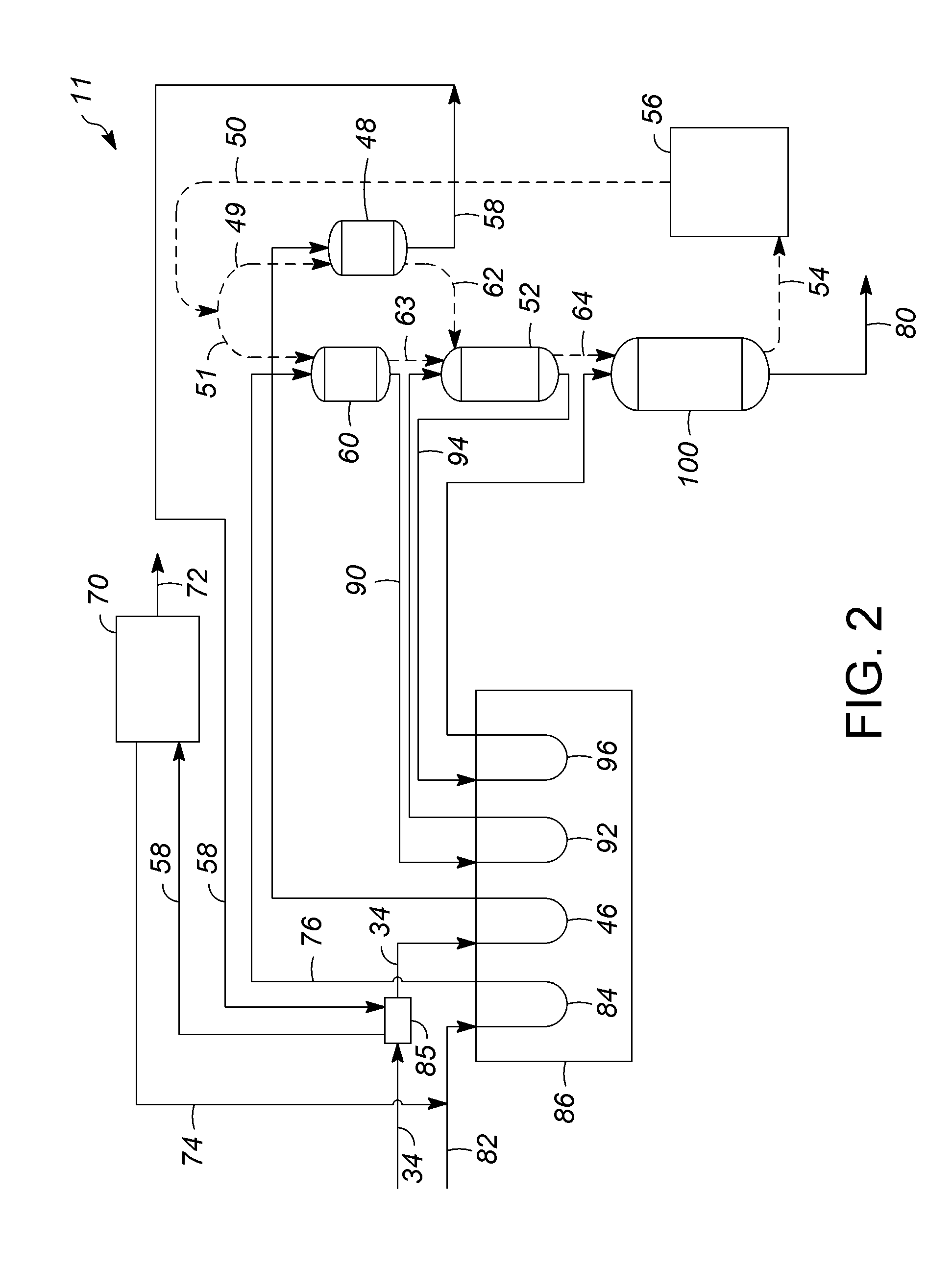Integrated catalytic cracking and reforming processes to improve p-xylene production
a technology of catalytic cracking and reforming process, applied in the direction of naphtha treatment, organic chemistry, hydrocarbon oil treatment products, etc., to achieve the effect of increasing the overall selectivity of products, reducing the conversion rate of hydrocracking units, and increasing the selectivity of naphtha
- Summary
- Abstract
- Description
- Claims
- Application Information
AI Technical Summary
Benefits of technology
Problems solved by technology
Method used
Image
Examples
Embodiment Construction
[0011]An integrated process includes a feedstock preparation section, generally 10, and a reforming section, generally 11. The process converts a hydrocarbonaceous feedstock 12 containing high boiling range hydrocarbons into a diesel range boiling hydrocarbons into products that include a large amount of p-xylene. Generally, the hydrocarbonaceous feedstock includes high boiling range hydrocarbons that boil in a range greater than a light cycle oil (“LCO”). A preferred feedstock is a vacuum gas oil (“VGO”), which is typically recovered from crude oil by vacuum distillation. A VGO hydrocarbon stream generally has a boiling range between about 315° C. (600° F.) and about 565° C. (1050° F.). An alternative feedstock 12 is residual oil, which is a heavier stream from the vacuum distillation, generally having a boiling range above 499° C. (930° F.).
[0012]The selected feedstock is introduced into a fluid catalytic cracking zone (“FCC”) 14 and contacted with a catalyst composed of finely di...
PUM
| Property | Measurement | Unit |
|---|---|---|
| temperature | aaaaa | aaaaa |
| temperature | aaaaa | aaaaa |
| pressure | aaaaa | aaaaa |
Abstract
Description
Claims
Application Information
 Login to View More
Login to View More - R&D
- Intellectual Property
- Life Sciences
- Materials
- Tech Scout
- Unparalleled Data Quality
- Higher Quality Content
- 60% Fewer Hallucinations
Browse by: Latest US Patents, China's latest patents, Technical Efficacy Thesaurus, Application Domain, Technology Topic, Popular Technical Reports.
© 2025 PatSnap. All rights reserved.Legal|Privacy policy|Modern Slavery Act Transparency Statement|Sitemap|About US| Contact US: help@patsnap.com



